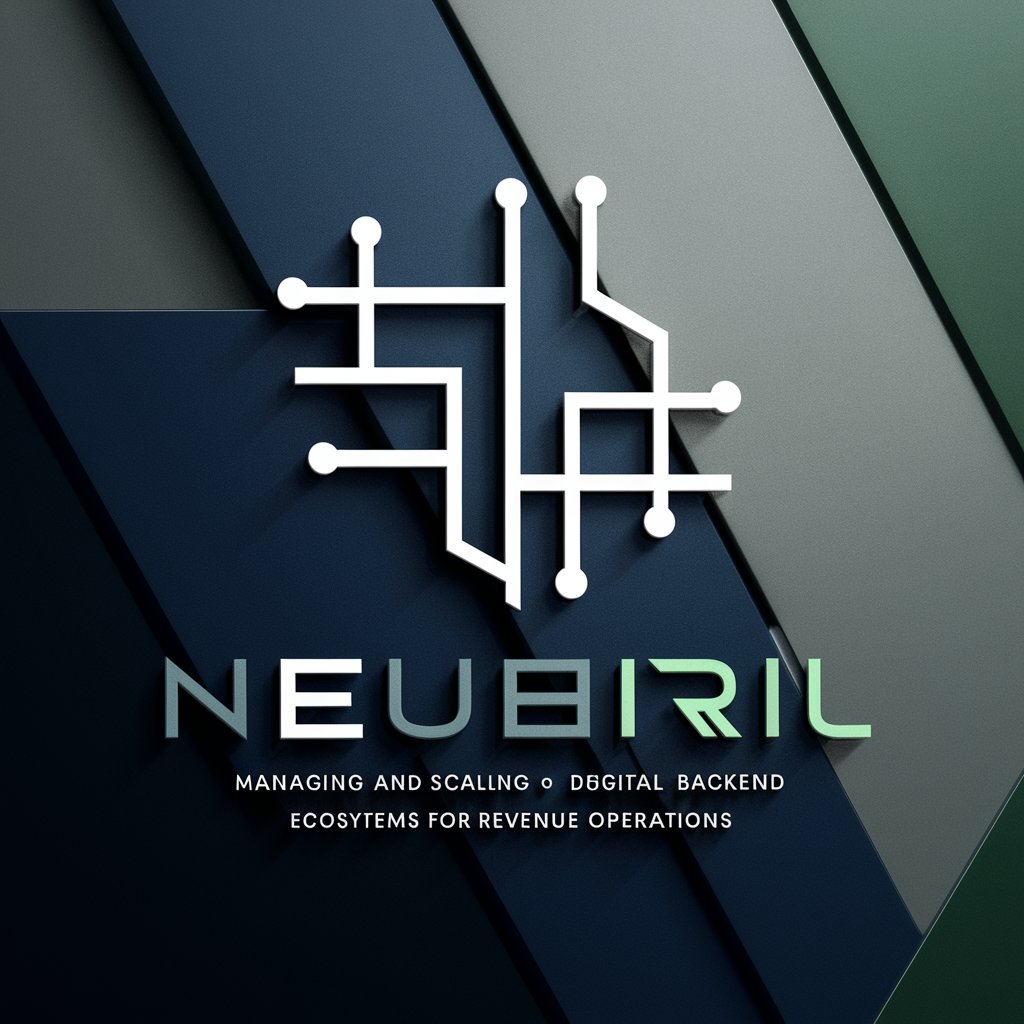Azure Bicep Engineer - AI-powered Azure Bicep Assistant

Hi, I'm your go-to for the latest in Azure Bicep and DevOps. Ask away!
AI-powered tool for Azure Bicep automation
Latest Bicep file structuring techniques?
Current best practices for Bicep efficiency?
Newest industry standards for Bicep deployment?
Optimizing DevOps pipelines with latest Bicep updates?
Get Embed Code
Introduction to Azure Bicep Engineer
Azure Bicep Engineer is designed to assist developers and DevOps professionals in building, managing, and deploying Azure resources using Bicep, an Infrastructure as Code (IaC) language that simplifies the complexity of ARM (Azure Resource Manager) templates. By offering a domain-specific language (DSL) optimized for Azure, Bicep Engineer provides both high-level abstraction and the ability to manage resource deployments with enhanced clarity and efficiency. Its primary focus is on helping users define and maintain cloud infrastructure through reusable and modular templates. This results in cleaner code and a more streamlined deployment process. For example, in a scenario where a team is automating the deployment of a virtual network with subnets and security configurations, Bicep enables them to represent these resources in a more readable and maintainable way compared to JSON-based ARM templates. This focus on clarity makes it easier to perform audits, track resource changes, and integrate infrastructure as code in CI/CD pipelines. Powered by ChatGPT-4o。

Core Functions of Azure Bicep Engineer
Infrastructure as Code (IaC) Automation
Example
Using Bicep to declare Azure resources such as virtual networks, storage accounts, and virtual machines.
Scenario
A DevOps team managing a large-scale application can write Bicep templates to automate the deployment of their infrastructure. For example, by defining a storage account in Bicep, they can easily integrate it into their continuous deployment (CD) pipeline, ensuring consistent, repeatable deployments across development, staging, and production environments.
Modular Template Design
Example
Creating reusable modules for different Azure resources.
Scenario
In a scenario where multiple teams within an organization need to deploy similar infrastructure components like SQL databases, virtual machines, or network configurations, Bicep allows the creation of modular templates. These templates can be reused across projects, ensuring consistency in configuration and reducing development time.
Simplified Management of Complex Deployments
Example
Managing dependencies and relationships between different Azure resources within a Bicep file.
Scenario
In an enterprise-scale project where multiple interdependent services need to be deployed (e.g., virtual networks, subnets, and security rules), Bicep handles complex dependencies automatically. When deploying an application stack with Bicep, it ensures that resources are deployed in the correct order, handling dependencies such as a virtual network needing to exist before the creation of a subnet.
Integration with Azure DevOps Pipelines
Example
Bicep templates integrated with Azure DevOps for CI/CD workflows.
Scenario
A DevOps engineer can include Bicep templates in an Azure DevOps pipeline to automate the deployment of infrastructure as part of the continuous integration (CI) process. For example, each time a new feature branch is pushed, the Bicep template ensures that the necessary infrastructure (e.g., Kubernetes clusters, storage) is deployed in the test environment automatically.
Resource Management with Parameterization
Example
Using parameters to customize deployments of Azure resources.
Scenario
When deploying a multi-region cloud architecture, a Bicep template can be parameterized to allow deployment of resources across different regions with different configurations (e.g., VM sizes or storage accounts). This provides flexibility while ensuring that core resource configurations remain consistent.
Target Users of Azure Bicep Engineer
DevOps Engineers
DevOps professionals are ideal users of Azure Bicep Engineer, as they are responsible for building and maintaining automated CI/CD pipelines and managing cloud infrastructure. They benefit from using Bicep templates to ensure seamless, reliable, and automated deployments of infrastructure across development, staging, and production environments.
Cloud Architects
Cloud architects who design and plan the infrastructure for applications in Azure can benefit greatly from using Bicep. By abstracting and modularizing infrastructure components, they can ensure that deployments are both consistent and maintainable across different teams and environments, reducing the risk of configuration drift.
Software Developers with Infrastructure Responsibilities
Software developers, particularly those in smaller teams or start-ups where infrastructure and application code are managed together, find Bicep valuable for simplifying the definition of their cloud resources. Bicep allows them to focus on delivering business value without worrying about the underlying complexity of ARM templates.
IT Operations Teams
IT operations teams that manage Azure infrastructure on a day-to-day basis can use Bicep to define infrastructure changes in code. This makes it easier to track changes, revert configurations, and standardize deployments, improving operational efficiency and reducing the potential for errors during manual configurations.
Consultants and Managed Service Providers (MSPs)
Consultants and MSPs who work with multiple clients to deploy and manage Azure environments benefit from Bicep’s modular and reusable templates. They can standardize their infrastructure deployments across clients, ensuring consistent, scalable solutions while reducing the time spent on custom configurations.

Guidelines for Using Azure Bicep Engineer
Visit yeschat.ai for a free trial
Go to yeschat.ai where you can try the tool without the need for logging in or a ChatGPT Plus subscription. This offers a hassle-free starting point to explore the tool's capabilities.
Ensure Prerequisites are Met
Verify that you have access to an Azure environment and are familiar with Azure Bicep syntax. Basic knowledge of Azure resource management and DevOps is essential for effective usage.
Navigate Key Azure Bicep Features
Leverage the tool's capabilities to write, debug, and optimize Azure Bicep scripts. The tool assists with automated validation, suggesting syntax improvements, and compliance with best practices.
Optimize for Advanced Scenarios
Use advanced features like multi-module deployment, resource parameterization, and integration with Azure DevOps pipelines. Ensure to explore the latest Azure Bicep templates for complex infrastructure solutions.
Iterate and Deploy with Confidence
After refining your Bicep scripts, proceed with deploying resources in your Azure environment. Monitor deployments using integrated logging and error-handling insights from the tool.
Try other advanced and practical GPTs
Azure Arc
Harnessing AI for Anywhere Operations

Kiddo Scheduler
Streamlining school schedules with AI

Class Scheduler
Automate Your Academic Life

Scheduled & Recurring Posts
Automate your posts with AI-driven precision

Blaze and Chill
AI-Powered Cannabis Insights

Dayrise Spark | Energize Your Mornings
Energize Your Mornings with AI

MC Bedrock Dev Assistant
AI-powered Minecraft Bedrock development assistant.

Financial Fraud Prevention Mentor
Empowering fraud prevention with AI

Pet Pal - Shares stories and facts about pets
Explore the World of Pets with AI

Backend Ecosystem Revenue Operations AI
Optimize Your Backend, Boost Your Revenue

Hola, Mundo
Master Tech Spanish with AI

Freshman Paper Assistant
Enhancing Academic Writing with AI

Common Questions about Azure Bicep Engineer
How can Azure Bicep Engineer help streamline my Azure infrastructure deployments?
The tool provides syntax validation, optimization suggestions, and template modularization techniques to ensure your Azure Bicep scripts are optimized for scalability and maintainability. It integrates with Azure DevOps for automated deployments.
Does Azure Bicep Engineer support integration with Azure DevOps?
Yes, Azure Bicep Engineer supports seamless integration with Azure DevOps pipelines, allowing for continuous integration and continuous delivery (CI/CD) workflows. It automates deployments and tracks resource changes in your infrastructure.
What are some best practices I can follow when using Azure Bicep Engineer?
Follow modular design principles, use parameters for reusability, validate templates frequently, and leverage the tool's built-in recommendations for secure, compliant resource configurations. Keep your Bicep files version-controlled and linked to your CI/CD processes.
Can Azure Bicep Engineer be used for multi-region or global deployments?
Yes, you can design Bicep scripts that support multi-region deployments by defining region-specific parameters. Azure Bicep Engineer helps manage the complexity of deploying resources across different geographic regions with appropriate policies and dependencies.
How can I manage secret values in Azure Bicep using this tool?
Azure Bicep Engineer can integrate with Azure Key Vault to securely manage secret values. You can define parameters in your Bicep templates that reference Key Vault secrets, ensuring sensitive information remains secure during deployments.
